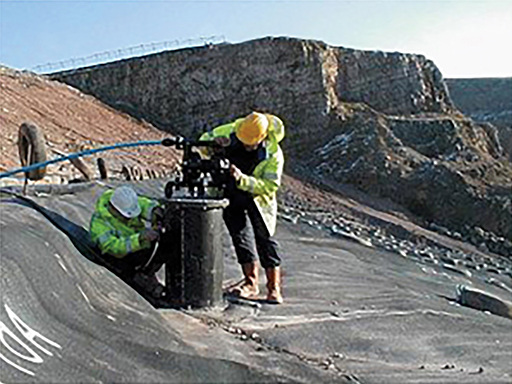3.2 Groundwater
Pollution is not restricted to surface waters; groundwater can also be polluted. Aquifers are vulnerable to contamination from human activities associated with agriculture, industry and waste disposal, and from chemical spills such as solvents and fuel oils. Pollution can either come from a point source, or from a widespread area of land (for example, agriculture). Once in an aquifer, groundwater pollution is difficult to clean up because it is not easily accessible, flow rates are low and residence times are long, so it may take a long time to disperse pollutants naturally and their effects may continue for a long time.
The only way to protect groundwater from pollution is, therefore, to prevent pollution happening. Protection zones can be established to reduce widespread pollution by restricting potentially polluting activities (as we shall see for nitrate in Section 4). Point discharges can also be controlled. Some of the potentially most polluting point sources are from landfills. Landfills are used to dispose of solid waste from domestic and industrial sources, and are used as they are often the cheapest method of disposal. Landfill waste can be a source of groundwater pollution as they produce leachates, liquids that form as water percolates through the waste, dissolving soluble compounds and the products of chemical and biochemical reactions that have taken place in the waste.
In the past, leachates were allowed to infiltrate into the ground below the landfill and into underlying aquifers where it was diluted by groundwater and gradually dispersed. However, this pollution of groundwater may lead to problems with the quality of groundwater used for water supply, and the practice is now regarded as unacceptable. To prevent the leachate from infiltrating into the ground below a landfill site, a landfill needs to be constructed so that the leachate is contained. The site can be lined with impermeable clay and/or a synthetic membrane, to prevent leachate escaping (Figure 15). The leachate is then collected and treated.

